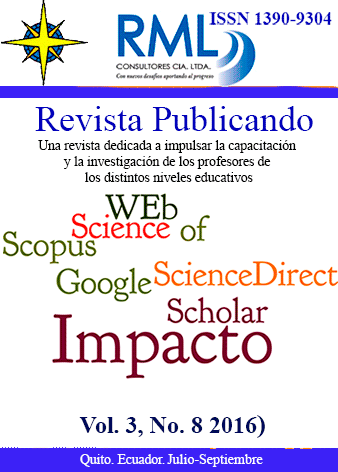Abstract
En el presente trabajo se emplea un estudio experimental de dos variantes de un algoritmo evolutivo estándar para la exploración de un laberinto (PathFinder) que le permita a un robot encontrar el mejor camino de salida a partir de su ubicación dentro del mismo. La primera variante del algoritmo emplea el Operador Genético de Cruce Puntual SPX (“point crossover”) y la segunda el Operador Uniforme UX (“uniform crossover”). Los laberintos de prueba están formados por un tamaño de NxM posiciones con un 20% de ellas representadas como obstáculos para el robot, la representación de un camino, básicamente está compuesta de cuatro coordenadas internas absolutas (Norte, Sur, Este y Oeste), pero se agregan coordenadas relativas como: Avanzar, Girar-Derecha y Girar-Izquierda, para realizar un análisis adicional al caso de estudio. Para confirmar los resultados se identifican si existen o no diferencias estadísticamente significativas entre los resultados brindados por estos dos operadores. Los resultados obtenidos indican que la mejor variante a implementarse del algoritmo es la que usa el operador UX con coordenadas relativas, ya que siempre genera una solución factible para la salida del laberinto o una solución más cercana a la salida en comparación a las otras variantes.
References
Alba, E., & Dorronsoro, B. (2008). Introduction to Cellular Genetic Algorithms. In Cellular Genetic Algorithms (pp. 3–20). Boston, MA: Springer US. http://doi.org/10.1007/978-0-387-77610-1_1
Back, T., 1996. Evolutionary Algorithms in Theory and Practice, Oxford Press,.
Davis, L., 1991. Handbook of Genetic Algorithms, Van Nostrand Reinhold.
Fogel, D. B. (1994). An introduction to simulated evolutionary
optimization. IEEE Transactions on Neural Networks, 5(1), 3–14. http://doi.org/10.1109/72.265956
Larrañaga, P., Kuijpers, C. M. H., Murga, R. H., Inza, I., & Dizdarevic, S. (1999). Genetic Algorithms for the Travelling Salesman Problem: A Review of Representations and Operators.
Artificial Intelligence Review, 13(2), 129–170. http://doi.org/10.1023/A:1006529012972
M. Belén, M. José A., & M., J. M. (2003). Inteligencia Artificial. Revista Iberoamericana de Inteligencia Artificial. Inteligencia Artificial. Revista Iberoamericana de Inteligencia Artificial, 7, 0.
Sumathi, S., & Paneerselvam, S. (2010). Computational intelligence paradigms: theory & applications using MATLAB. CRC Press.
Goldberg, D.E., 1989. Genetic Algorithms in Search, Optimization and Machine Learning, Addison- Wesley.
Holland, J.H., 1992. Adaptation in Natural and Artificial Systems, MIT Press, Second Edition.
You are free to:
Share — copy and redistribute the material in any medium or format.
Adapt — remix, transform, and build upon the material.
The licensor cannot revoke these freedoms as long as you follow the license terms.
Under the following terms:
Attribution — You must give appropriate credit, provide a link to the license, and indicate if changes were made. You may do so in any reasonable manner, but not in any way that suggests the licensor endorses you or your use.
NonCommercial — You may not use the material for commercial purposes.
ShareAlike — If you remix, transform, or build upon the material, you must distribute your contributions under the same license as the original.
No additional restrictions — You may not apply legal terms or technological measures that legally restrict others from doing anything the license permits.
